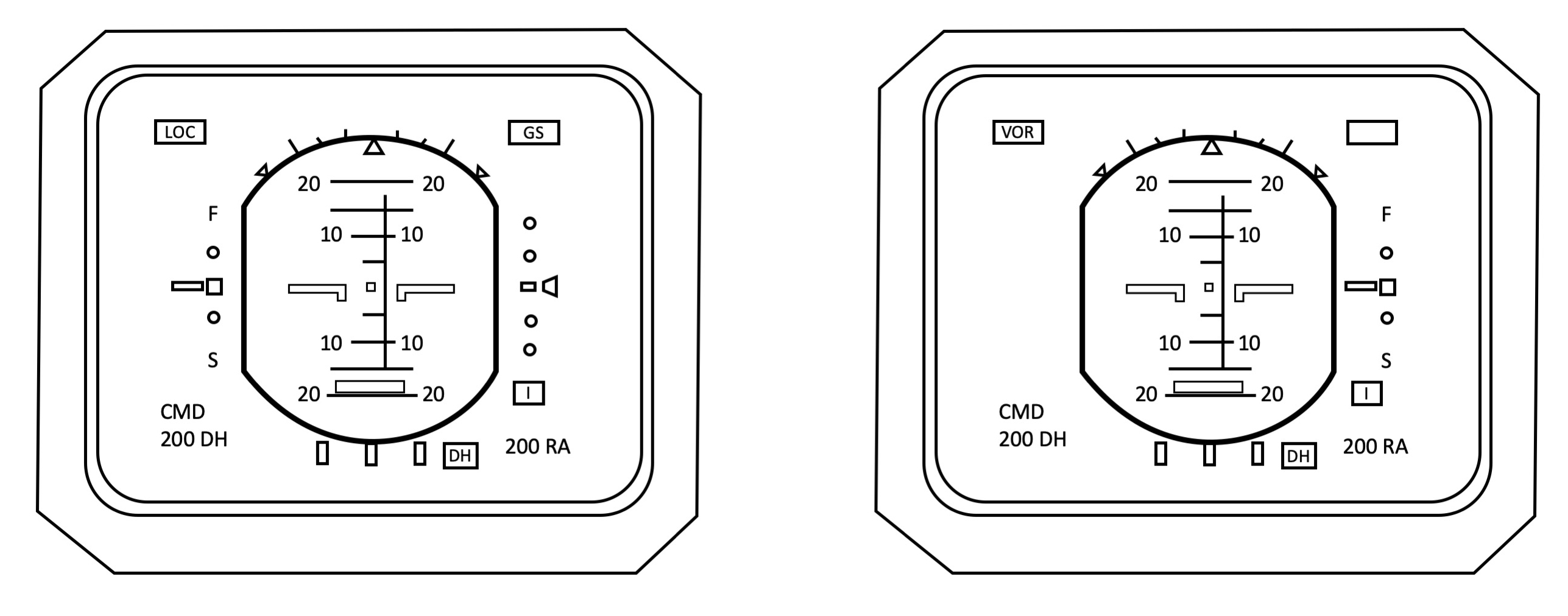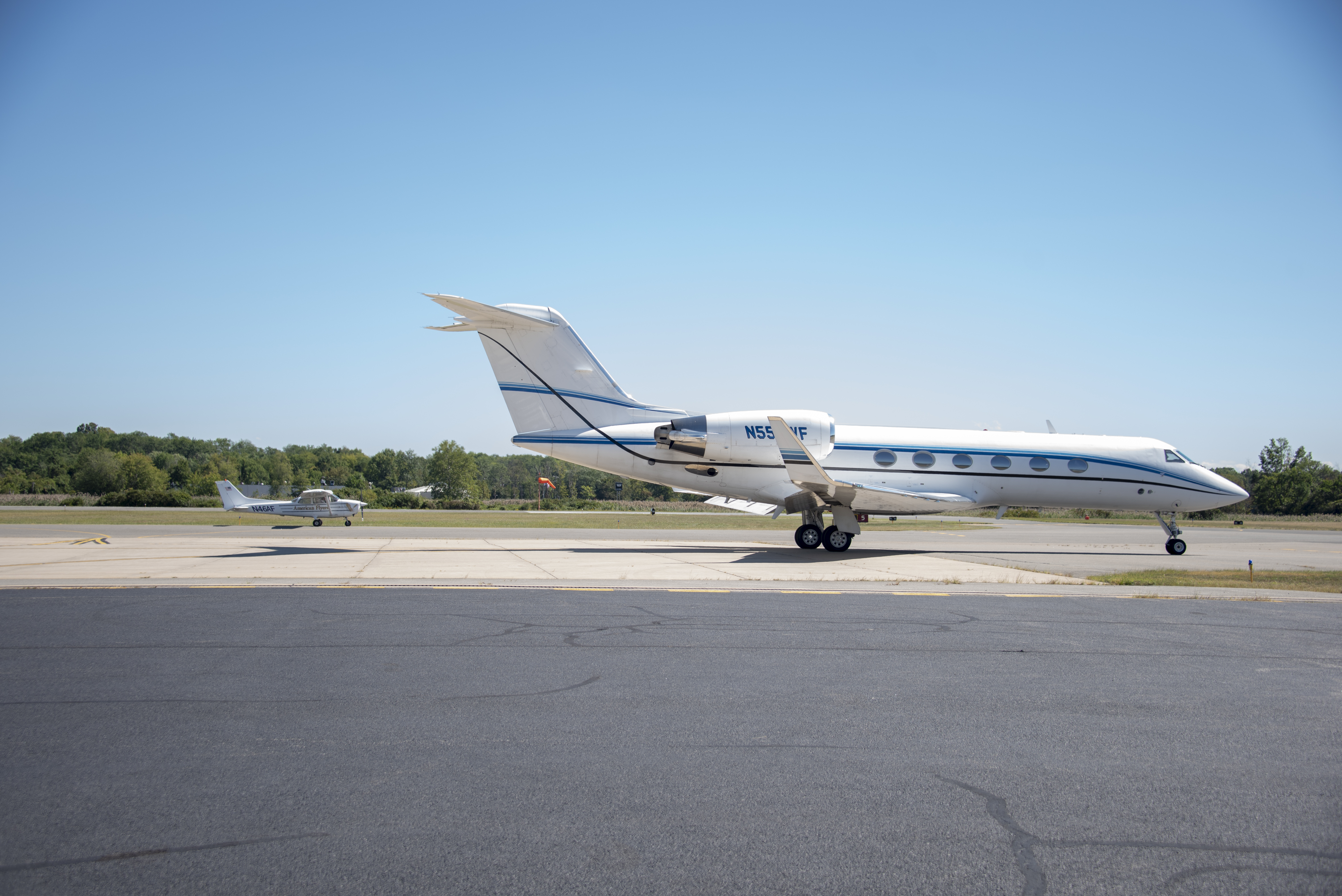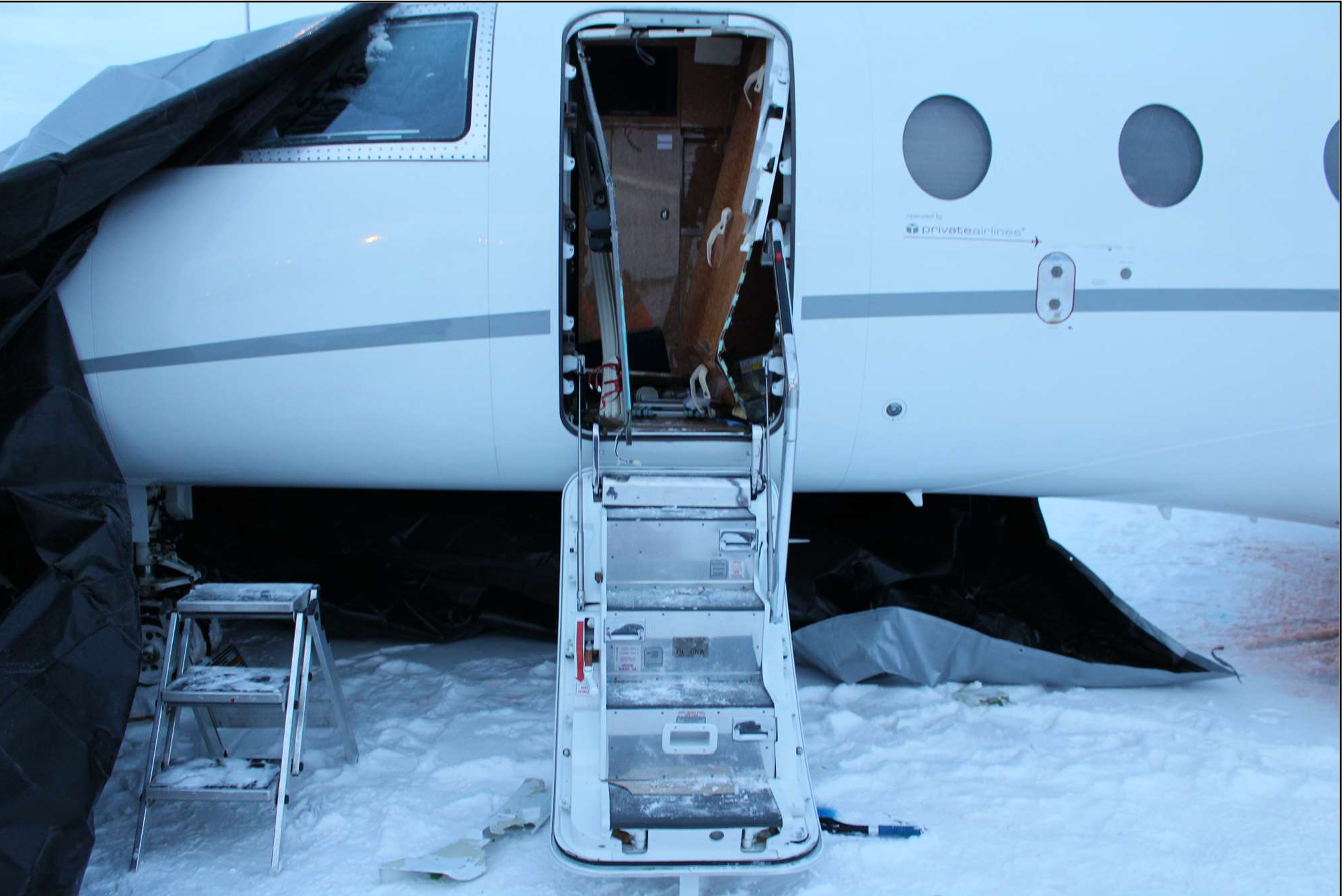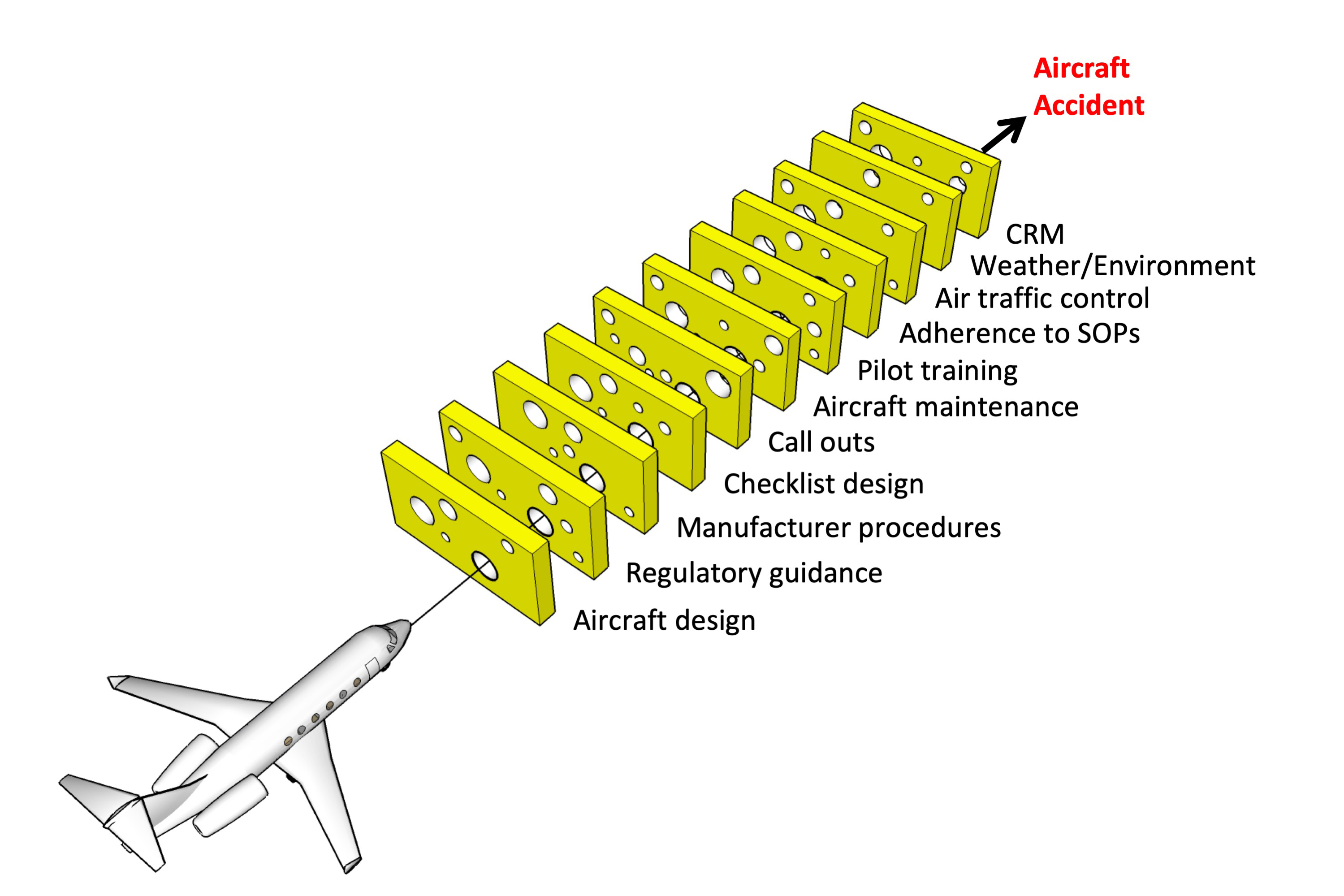There are two competing thoughts about the wisdom or advisability of keeping qualified in two different aircraft types. In one viewpoint, doing so makes you less proficient and capable in both. The opposing view is that it makes you a better stick and rudder pilot in both aircraft and less susceptible to becoming complacent in either. Having maintained dual qualification a few times in my career, I am a believer in the former view. Maintaining dual qualification reduced my confidence in both aircraft.
— James Albright

Updated:
2019-10-31
But quite often we don’t have a choice and the demands of the job dictate dual qualification. Some operations dictate more than one type, be it because of range, cabin size, operating cost, or the aircraft’s external dimensions. No matter the motivation, it will please the accountants to have dual qualified crews because it appears cost effective. But at the same time this arrangement will make the safety officer cringe. While I sympathize with the bean counter, it is the body count I am really worried about.

1
The size of it
If you’ve never been in the game of maintaining dual qualification, you might think the biggest problem lies with the sheer size of the airplanes. When I think of “big,” I think of the Boeing 747. I was surprised to find it one of the easiest landing airplanes I’ve ever flown because of the cushioning effect of the massive wing and the airplane’s inherent stability under virtually all landing conditions. Of course, I had my streak of bad landings, which I suppose is par for the course. But I was unable to diagnose why I had these and how I had cured them. After a few years it became advantageous for me to qualify in a PA-32 Piper Lance, a turbo-charged, retractable landing gear single-engine aircraft. To my surprise, qualifying in the Lance forced me to become more methodical about landings. In the small aircraft: “aim point / airspeed until the aim point disappears, eyes on the end of the runway, let the airplane sink to touchdown.” In the jumbo: “aim point / airspeed until 50 feet, ensure auto throttles retard, eyes on the end of the runway at 30 feet, let the airplane sink to touchdown.” It turns out my bad streaks were caused by skipping the “eyes on the end of the runway” bit, flying such different aircraft cured me of that oversight.
I’ve heard similar stories from many pilots about the stick and rudder aspect being a non-factor. Of course, there are exceptions. Mixing an airplane with ailerons and one without, for example, could be cause for extra caution. In my experience, the real challenges are posed by inside the cockpit: avionics and procedures.
2
Avionics
There is an old saying in the Gulfstream world that goes like this: “If you’ve flown one gee three, you’ve flown one gee three.” There are just so many differences. You can have glass or non-glass cockpits. Some are electrically DC-powered, others are primarily AC-powered. The location of radios, navigation systems, and even basic avionics can differ even on sequential serial numbers. Maintaining qualification on two types of G-IIIs can be a humbling experience.
While I was a pilot flying for the 89th Airlift Wing at Andrews Air Force Base, Maryland, I primarily flew the C-20B, a Gulfstream III. We had seven “B models” at the time and a little more than half our squadron’s pilots were qualified to fly it. We had what has become known as a “partial glass cockpit” and all seven were identical, inside and out. We racked up a lot of hours and after a while you could reach out and touch any switch without looking and your eyes reflexively knew where every instrument and indicator was.
At least that is the way it was for most of our pilots. I was not one of those pilots. A small subset of our pilots secretly kept qualification in three other aircraft, the C-20C, which were also Gulfstream IIIs. The aircraft were cosmetically similar, but the cockpits were drastically different. Looking for the radio control head? Look again, that was the other airplane. Where is the VOR needle? No, not there, that was the other airplane. When flying the C-model, everyone realized it would take a few hours to acclimatize to the new jet and seeming like an idiot was to be expected. But when we returned to the B-model, our peers always had a good laugh at our expense. “What’s with you? I thought you were good.”
Feeling like an idiot seems to be a common thread amongst dual qualified pilots. It isn’t a problem, so long as we take the time to reacquaint ourselves from airplane to airplane. But we often revert to our comfort zones when under stress. In those conditions, even what some would consider a minor cockpit difference can become deadly.
To realize how critical having everything where we expect it, consider the Instrument Landing System (ILS); there is no more comfortable instrument approach. No matter where in the world you are, having a flight director guide you down to minimums as the raw data remains centered can give any pilot a huge shot of confidence. Even without the flight director, we practice regularly to keep the localizer centered and the airplane on course, as well as the glide slope deviation indicator in the middle and us on a beautifully stable glide path. Right? Now, without looking, where do you expect to see the glide path indicator? Will it be on the left or right of the attitude indicator?
The standard layout, as described by Advisory Circular 25-11, is to have the glide slope deviation indicator on the right, provided a valid frequency is tuned and the avionics have a valid signal to display. Otherwise the indicators should disappear. That has been the standard for a while, but there are legacy systems out there. The pilots of Gulfstream III N85VT knew all too well about the non-standard layout of a portion of their fleet of airplanes. Of the six aircraft they routinely flew, five had the glide slope indicator on the left, non-standard side. Of those, four had an airspeed fast/slow indicator on the right side and the remaining airplane had nothing at all. These highly experienced pilots flew the non-standard layout mostly, but not exclusively.

Left illustration: A standard EADI showing on glide slope.
Right illustration: A non-standard EADI without a valid glide slope signal showing an on speed indication.
On November 22, 2004, they were prepositioning their airplane to William P. Hobby Airport, Houston, Texas (KHOU) on an IFR day that would demand their best instrument flying skills. The runway visibility was 1/8 statute miles in fog with runway visual range between 1,600 and 2,400 feet. The first officer dialed in the correct ILS frequency into the standby window of the radio’s control panel but forgot to throw the switch that turned it active. Neither pilot followed up with the “identify” step of what every basic instrument pilot has drilled into their heads: tune, identify, monitor.
The captain turned the airplane to intercept what he thought was the localizer but turned out to be the VOR. He voiced concern that his flight director would not go into the approach mode but proceeded to fly the course line and start a descent along what he seemed to think was the glide slope. Passing about 1,000 feet, the first officer realized the wrong frequency was active and made the switch. He said, “you’re all squared away now.” The captain turned and intercepted the localizer at an altitude of about 900 feet, which was 800 feet below the glide slope. He continued to descend to his decision altitude of 244 feet, only to impact a light pole at 198 feet more than 3 miles short of the runway. All three on the aircraft were killed.
The National Transportation Safety Board speculates that the pilots believed they were on glide slope because the indicator on the right side of the Electronic Attitude Director Indicators (EADIs) were centered. Without the localizer tuned, the glide slope indicator on the left would have been absent. They flew the fast/slow indicator believing they were on glide slope. Once the localizer was tuned, it is likely the glide slope indicator would have appeared on the left of their EADI, but by that time they were focused on the Fast/Slow indicator.
The Ground Proximity Warning System was supposedly operational (no problems documented) but none of the life-saving calls were made. It is easy to find fault with the pilots, who besides making the tune, identify, monitor errors, failed to make all but one of their required callouts. But who among us hasn’t gone into “I’m going to make this work” mode when falling behind the airplane? Today’s standardized avionics have made it easier for us, but flying aircraft of two different configurations still complicate matters for dual qualified pilots.
3
Procedures
Consider the mundane task of turning an aircraft’s oxygen system on prior to flight. You might have a single switch or two with one for the airplane system and the other for the cabin. It is a useful arrangement for the aircraft’s initial flights after initial build but little more than a nuisance once the cabin is outfitted. That is the case in “traditional” Gulfstreams like the G550, as well as the “hybrids” such as the G150. Generations of Gulfstream pilots know that the price of getting the order wrong can be the proverbial “rubber jungle” of oxygen masks deployed by mistake, ten or fifteen minutes of stuffing those masks back into their containers, and a case of beer to the mechanic left with that task. For years Gulfstream pilots knew that the aircraft switch is turned on first, followed by the cabin. But that is not true for the hybrids, where the order is reversed.
Dropping oxygen masks in the cabin can be embarrassing for a pilot, but some type-specific confusion in some airplanes can cause more serious damage, injury, or loss of life. The G550 Flight Management System (FMS), for example, automatically makes many performance entries and even reads the fuel gages. In the G150 these require manual entries. Pilots who fly both types can forget and end up taking off with invalid data. The larger aircraft requires the aircraft’s outflow valve be closed overnight but that isn’t the case for the smaller Gulfstream. This mistake cost a pilot his life on January 4, 2018 when attempting to open his G150’s main entrance door.
The aircraft, OE-GKA, had arrived at Kittilä Airport, Finland (EFKT) two days prior and was planned to fly on a positioning leg to Yekaterinburg, Russia (USSS) without passengers. The captain opened the door and helped the flight attendant with interior duties while the first officer remained outside to brush snow off the aircraft. The captain eventually went into the cockpit to start the Auxiliary Power Unit (APU) and went outside to help the first officer with snow removal. After exiting the airplane, he closed the door, leaving the flight attendant alone inside.
A little later the flight attendant inside the cabin felt a strange pressure in her ears and chest. She went into the cockpit and attempted to get the attention of the pilots working outside by knocking on the window. The pilots noticed the knocking and the captain went to open the door. According to the co-pilot’s observations it was unusually difficult for the captain to get the door open. Then, the captain pulled harder on the door handle at which time the door blew open with excessive force, hitting the captain who was standing underneath the door and knocking him to the ground. The pressure wave also knocked the co-pilot down, who had been standing approximately one meter from the left side of the door.
On the face of it, the accident was caused by the pilots failing to check the position of the outflow valve as required by the checklist prior to starting the Auxiliary Power Unit (APU), which automatically introduced pressurized air to the cabin. When he closed the main entrance door, leaving only the cabin attendant inside, the aircraft pressurized. There was no way to shut the APU down from the outside of the airplane and the cabin attendant had not been trained in this procedure. The captain’s errors may have technically caused the accident, but the design of the system set him up for the failure. All G150 pilots should be aware of the criticality of ensuring the outflow valve is open prior to starting the APU. Any G150 pilot who also flies other Gulfstream models should realize that the standard procedure of closing the outflow valve after shutdown may not be optimal in all aircraft. There is also a lesson for all other pilots too. Pilots flying aircraft with even these kinds of minor procedural differences need to pay even closer attention to checklists because proper procedures in one airplane can set them up for catastrophe in others.
4
Management’s role
Management’s role when setting dual qualified pilots for success or failure cannot be overstated. The decision to dual qualify pilots is primarily an economic one, of course, but mitigation strategies do not necessarily have to be costly. The most successful techniques that I’ve seen include the following:
- Select aircraft from the same manufacturer to minimize the biggest differences. Checklists, procedural flows, and system designs can be radically different when one aircraft comes from a different builder.
- Choose aircraft that are “sympathetic” in that they share design philosophies. Requiring a pilot to be well versed in Honeywell and Collins FMS designs, for example, is only asking for procedural mistakes. Not all airplanes use landing gear safety pins, for another example. Mixing pinned and pinless types can lead to a takeoff with the pins left in.
- Assign each pilot a primary and a secondary airplane; it may be advisable to allow the pilot to act as captain only on the primary.
- Alternate training events between aircraft and provide for training at least every six months. The least confident dual qualified pilots I’ve interviewed alternated training with twelve months between recurrents; a recipe for failure.
- Require a minimum level of experience in one type before branching out to a second. I recommend pilots have at least 500 hours and a year in type to learn best practices and solidify the lessons from initial training and at least one recurrent.
- Once dual qualified, insist on type-specific training at least once a year.
- Track type-specific currency in terms of hours per month, trips per month, and recency of training to ensure at least one pilot of every assigned crew is truly proficient.
- Establish a minimum level of currency in terms of hours and trips per month before a pilot is no longer considered (a) qualified and must attend recurrent training, and (b) proficient and must take steps to regain proficiency. There is no industry consensus here and you may find yourself trailblazing new ground. I find myself in this situation now and then when moving to a new flight department, adding a new aircraft type, or hiring pilots with less experience. I haven't implemented formal minimums yet but have the following proposals ready to go:
- An aircraft "model" is considered the category, class, type, and specific model which describes the configuration of airplane being flown, with only minor differences allowed. I consider a G450 to be a different airplane than a G550. I would also say one with data link is different than one without. You will have to determine which aircraft in your fleet are the same and which are different.
- A pilot is considered "experienced" after having logged at least 500 hours in the specific model, at least 200 in the previous 12 months.
- An experienced pilot is considered qualified if within twelve months of initial or recurrent training.
- A pilot who is not yet considered experienced is considered qualified if within six months of initial or recurrent training.
- An experienced pilot is considered "proficient" if he or she has flown at least once in the previous 30 days and has at least three takeoffs and landings in the previous 90 days.
- A pilot who is not yet considered "experienced" is considered proficient if he or she has flown at least twice in the previous 30 days and has at least three takeoffs and landings in the previous 60 days.
- At least one pilot for every trip carrying passengers must be proficient. To regain proficiency status the pilot can log the necessary experience without passengers on board or can obtain the necessary experience with a proficient pilot as the PIC.
There will be a lot of gnashing of teeth over this proposal and I'm not sure I can get it enacted. But it is my starting position.
5
A pilot’s survival guide
Although regulations pertaining to recency of experience and recurrent flight training attempt to ensure that pilots conduct these critical flight operations on a periodic basis, accidents occurring during critical phases of flight continue to plague the entire general aviation community. To address this dilemma, it is important to first distinguish between being current and being proficient. Remember that proficiency, by definition, means performing a given skill with expert correctness. In contrast, currency simply refers to being up to date or occurring within a recent period of time. These definitions are useful in illustrating the point that being current in a particular task does not necessarily imply proficiency at that task, If we apply these definitions to the recency of experience requirements specified in the regulations, it becomes evident that a pilot. while legally current, may not be adequately proficient in certain critical flight skills to act as pilot in command.
Source: Singleton
- Encourage cross platform standardization. You will have varying levels of flexibility when it comes to modifying checklists, callouts, and other procedures. To the extent possible, these should be standardized between types. Some aircraft, for example, mark as complete checklist items the system senses have been completed. Others require pilots to challenge and respond to each item on the checklist. If you are flying both types, it would be wise to make the challenges and responses for both aircraft.
- “Chair fly.” The day before flying the type you haven’t operated in a while, it may be wise to sit in the cockpit and practice every step of every normal checklist. You should also visualize the procedures required to start engines, taxi, takeoff, descend, land, and shut down.
- Keep an honest written log, critiquing yourself. As pilots we realize that what we do for a living can be complicated. As ego-centric human beings, we also have a tendency to excuse ourselves when things don’t go as well as they can. Keeping a post-flight critique log can help you target your problem areas prior to your next recurrent training session.
- Spring load yourself to the “knock it off” position. Fighter pilots in training reserve the “knock it off” call for when the situation accelerates beyond their mental faculties. If you aren’t as proficient as you want to be, don’t be afraid to set the parking brake prior to launching to reassess. If the airplane gets to the final approach fix before you do, a holding pattern might be in order.
6
Picking your Swiss cheese slices
Accident investigators are fond of saying that few accidents are caused by a single factor; that most accidents occur because of a chain of factors. They will tell you that breaking just one link of that chain can prevent the accident. Flight safety officers will add another metaphor to this and talk about Swiss cheese. Imagine a ray of light trying to shine through a stack of several layers of Swiss cheese. Because the holes are randomly placed on each slice, the chances of the light getting all the way through is minimized. The light is circumstance, each slice of cheese is a different factor, and at the end of all this is the accident.
It seems that pilots flying multiple types have a more complicated stack of Swiss cheese facing them than their single-type peers but that doesn’t have to be true. You shouldn’t think of each layer of cheese as determined at random. You can determine where those holes are. Let’s say one layer is the design of the airplane itself, the next are your checklist procedures, the next are your mandatory callouts, and so on. It could be that the callouts layer that works for one airplane will fail to catch mistakes in design and checklists in the other. If you can adjust the callouts to work for both aircraft, you can prevent that ray of light from reaching the scene of the accident.
References
(Source material)
Singelton, Bill J., Currency Vs. Proficiency: Current vs. Proficient, AOPA Online.



